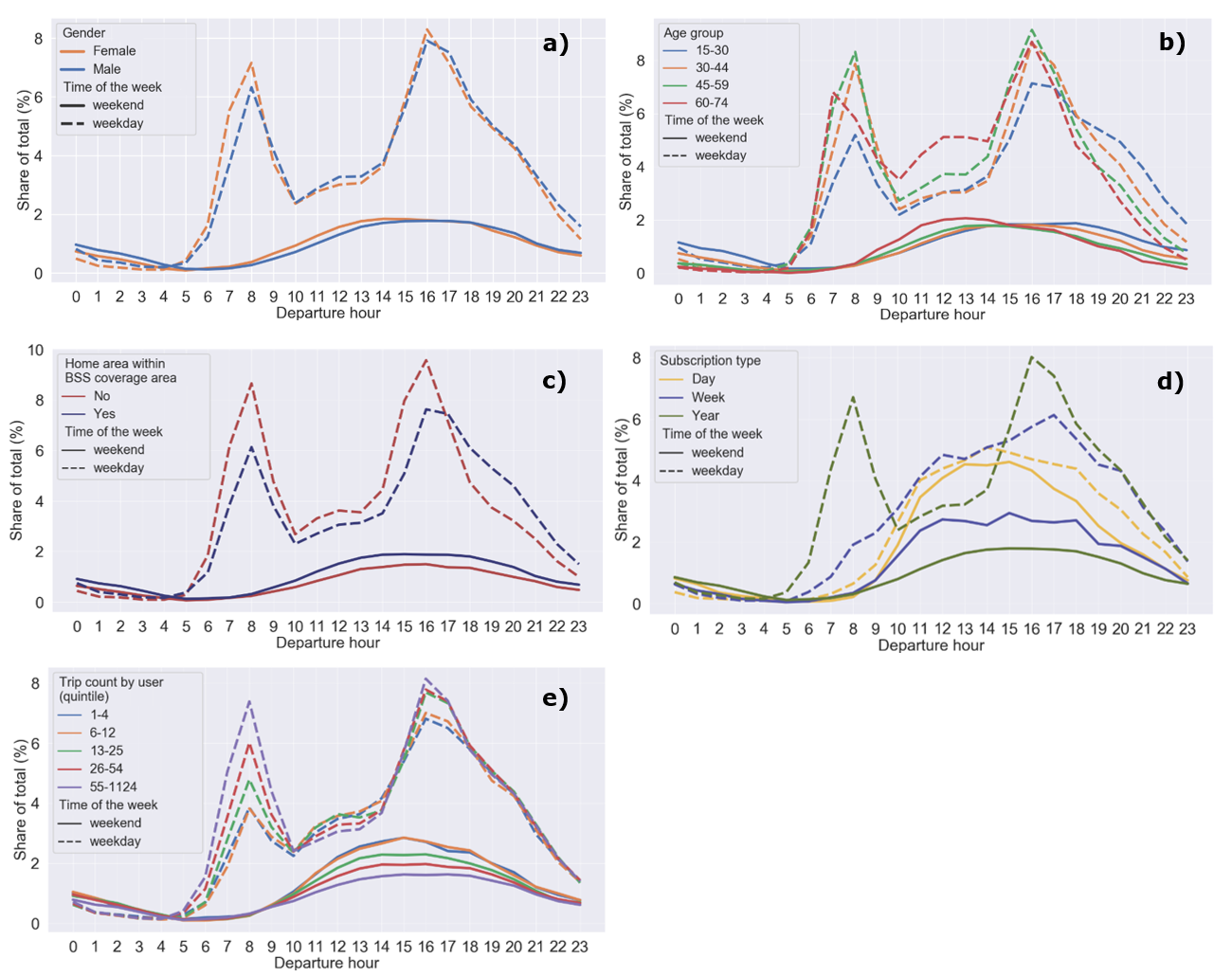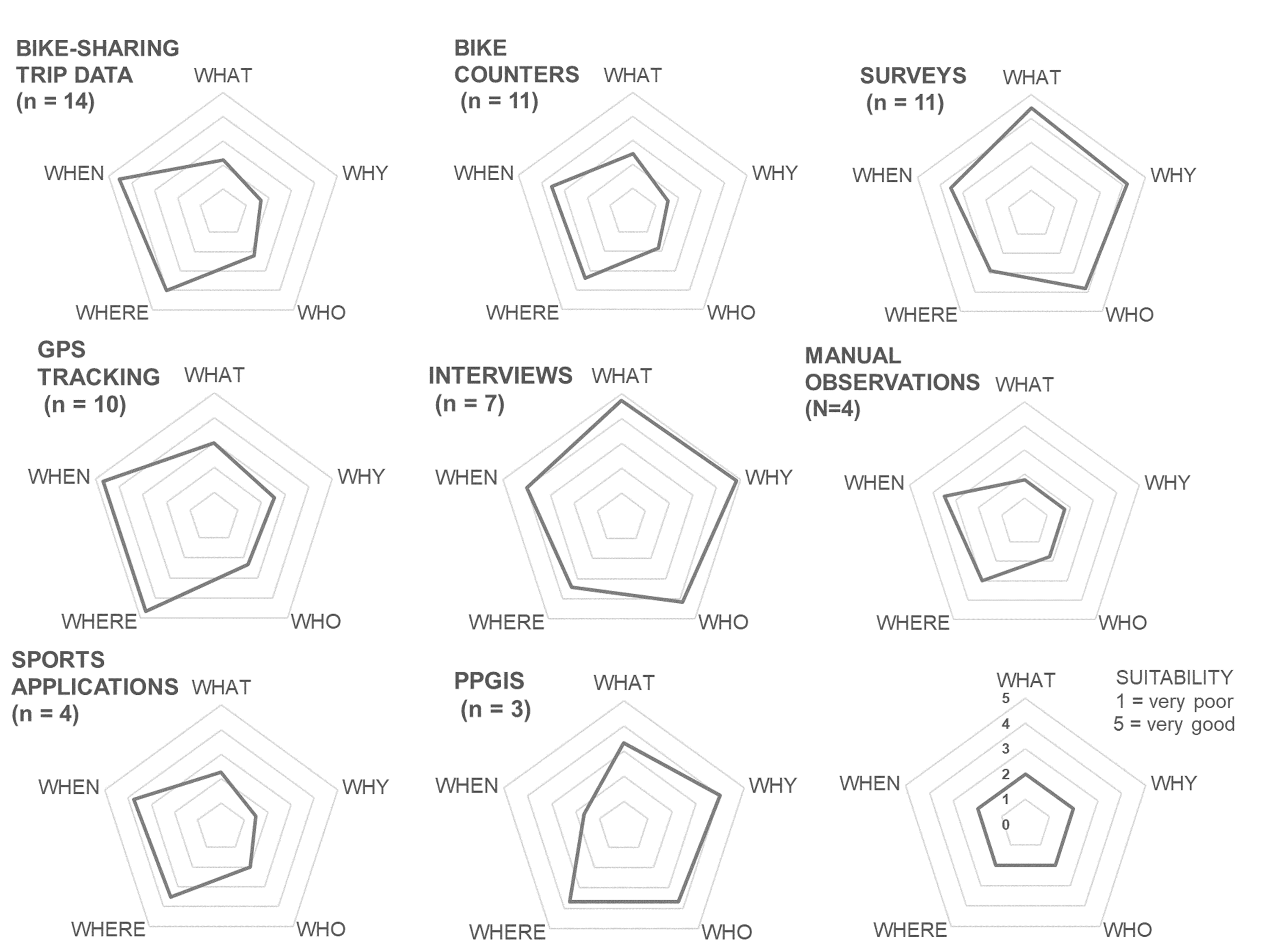We have published two new articles on cycling!
‘What do trip data reveal about bike-sharing system users‘ was published in Journal of Transport Geography.
Highlights:
-
- As cities strive to foster cycling, bike-sharing systems (BSS) have become increasingly common.
- We used bike-sharing trip data from Helsinki and looked at user profiles and usage patterns. We also focused on the possibilities of BSS trip data.
- The bike-sharing system in Helsinki has been actively used even in international comparison, but our results point toward challenges in BSS inclusivity in Helsinki in 2017. Most use was contributed by a limited group of ‘super-users’.
- BSS trip data provides opportunities to understanding BSS user profiles & patterns. By being well available, unlike many other cycling data sources, and automatically collected, trip data can save resources, facilitates longitudinal research and reveals observed behaviour.
‘Comparing spatial data sources for cycling studies – a review‘ will be published officially later this year in the NECTAR book ‘Transport in Human Scale Cities’, but we have made it available as a postprint already now.
Highlights:
-
- We reviewed various spatial data sources on cycling
- We built upon the expertise of a broad group of cycling experts and collected their views on the strengths, weaknesses and usability of the data sources.
- With several reviewed data sources, having data is still a key challenge including difficulties in data collection, lack of suitable data and poor accessibility to it,
- Data availability could be improved by increased data sharing by planning agencies and researchers. Development of data products to improve access to the data collected by private companies is also needed. However, this development must be carried our responsibly protecting users’ privacy.
Here’s the press release on the articles:
Spatial data for understanding urban cycling
Cities strive to increase their cycling levels and constantly more information is being collected on cycling. Two recent studies by the Digital Geography Lab group reveal what novel big data tell us about city bike users, for example, and how the availability of information collected about cycling remains a major challenge.
The popularity of cycling is growing, especially in urban areas. Also, as a result of the COVID-19 crisis, many have switched to cycling. Cycling is one of the ways to promote sustainable mobility in cities. Bike-sharing systems have become one of the most visible measures to promote cycling in Finnish cities, and the reception of the systems has often been enthusiastic. Bike-sharing systems also provide a novel information about cycling.
The Digital Geography Lab group has studied cycling with novel big data. A recently published article considers the possibilities of bike-sharing trip data in cycling research. The information is used to analyze the spatial and temporal usage patterns of the Helsinki bike-sharing system in addition to understanding user characteristics and inclusivity of the system.

Young adult city dwellers are large consumers of urban bikes
“Helsinki bike-sharing system has been popular based on use activity. But in the scientific discussion, bike-sharing systems are often criticized for mainly serving only certain groups of people, ”says doctoral researcher Elias Willberg.
“This criticism made us interested in looking at users of the Helsinki system,” he continues. The aim for the research is to bring new perspectives to the practical design and management of bike-sharing systems in cities.
The study found that despite the high use, the user population in the early years of the bike-sharing system was strongly focused on young adults living within the system area. The survey was conducted with data from 2017, when the system still collected basic data variables on registered users. The study also showed the potential of bike-sharing trip data in understanding user needs and habits of various users.
“It is important to pay attention that bike-sharing systems would serve the widest possible range of different areas and groups of people, so that the systems can effectively support sustainable urban mobility. Data from shared bikes provide useful information for these needs, ”Willberg says.

Various sensors and portable devices provide information about cycling to researchers
Another newly completed scientific article by our group involved cycling experts from across Europe and gathered information on the benefits and challenges of various data sources on cycling. The article will be published in the book “Transport in Human Scale Cities” in the autumn, but it is already available online. “Various sensors and portable devices such as mobile phone apps and sports watches are increasingly storing information also about cyclists. A diverse use of various data sources is essential for holistic understanding of cycling, ”says Tuuli Toivonen, Professor of Geoinformatics, who led the research.
The main message of the study is that the availability of data remains a major bottleneck in cycling research and knowledge-based design. Novel data sources provide tools for understanding cycling and answer questions such as where and when people cycle in urban areas. But they are not a panacea. Automatically collected data from various systems do not provide much for understanding causes of cycling, for example. Such data may also be skewed on active users. In this case, they do not necessarily represent the entire population.
“There is still a lot of work to be done in improving the availability and transparency of cycling data,” Toivonen says. “Despite the great need, access to data must be promoted responsibly, taking into account privacy issues,” she concludes.


